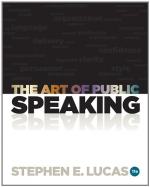Enunciation
Correct enunciation is the complete utterance of all the sounds of a syllable or a word. Wrong articulation gives the wrong sound to the vowel or vowels of a word or a syllable, as doo for dew; or unites two sounds improperly, as hully for wholly. Wrong enunciation is the incomplete utterance of a syllable or a word, the sound omitted or added being usually consonantal. To say needcessity instead of necessity is a wrong articulation; to say doin for doing is improper enunciation. The one articulates—that is, joints—two sounds that should not be joined, and thus gives the word a positively wrong sound; the other fails to touch all the sounds in the word, and in that particular way also sounds the word incorrectly.
“My tex’ may be foun’ in the fif’ and six’ verses of the secon’ chapter of Titus; and the subjec’ of my discourse is ’The Gover’ment of ar Homes.’"[6]
What did this preacher do with his final consonants? This slovenly dropping of essential sounds is as offensive as the common habit of running words together so that they lose their individuality and distinctness. Lighten dark, uppen down, doncher know, partic’lar, zamination, are all too common to need comment.
Imperfect enunciation is due to lack of attention and to lazy lips. It can be corrected by resolutely attending to the formation of syllables as they are uttered. Flexible lips will enunciate difficult combinations of sounds without slighting any of them, but such flexibility cannot be attained except by habitually uttering words with distinctness and accuracy. A daily exercise in enunciating a series of sounds will in a short time give flexibility to the lips and alertness to the mind, so that no word will be uttered without receiving its due complement of sound.
Returning to our definition, we see that when the sounds of a word are properly articulated, the right syllables accented, and full value given to each sound in its enunciation, we have correct pronunciation. Perhaps one word of caution is needed here, lest any one, anxious to bring out clearly every sound, should overdo the matter and neglect the unity and smoothness of pronunciation. Be careful not to bring syllables into so much prominence as to make words seem long and angular. The joints must be kept decently dressed.
Before delivery, do not fail to go over your manuscript and note every sound that may possibly be mispronounced. Consult the dictionary and make assurance doubly sure. If the arrangement of words is unfavorable to clear enunciation, change either words or order and do not rest until you can follow Hamlet’s directions to the players.
QUESTIONS AND EXERCISES
1. Practise repeating the following rapidly, paying particular attention to the consonants.




